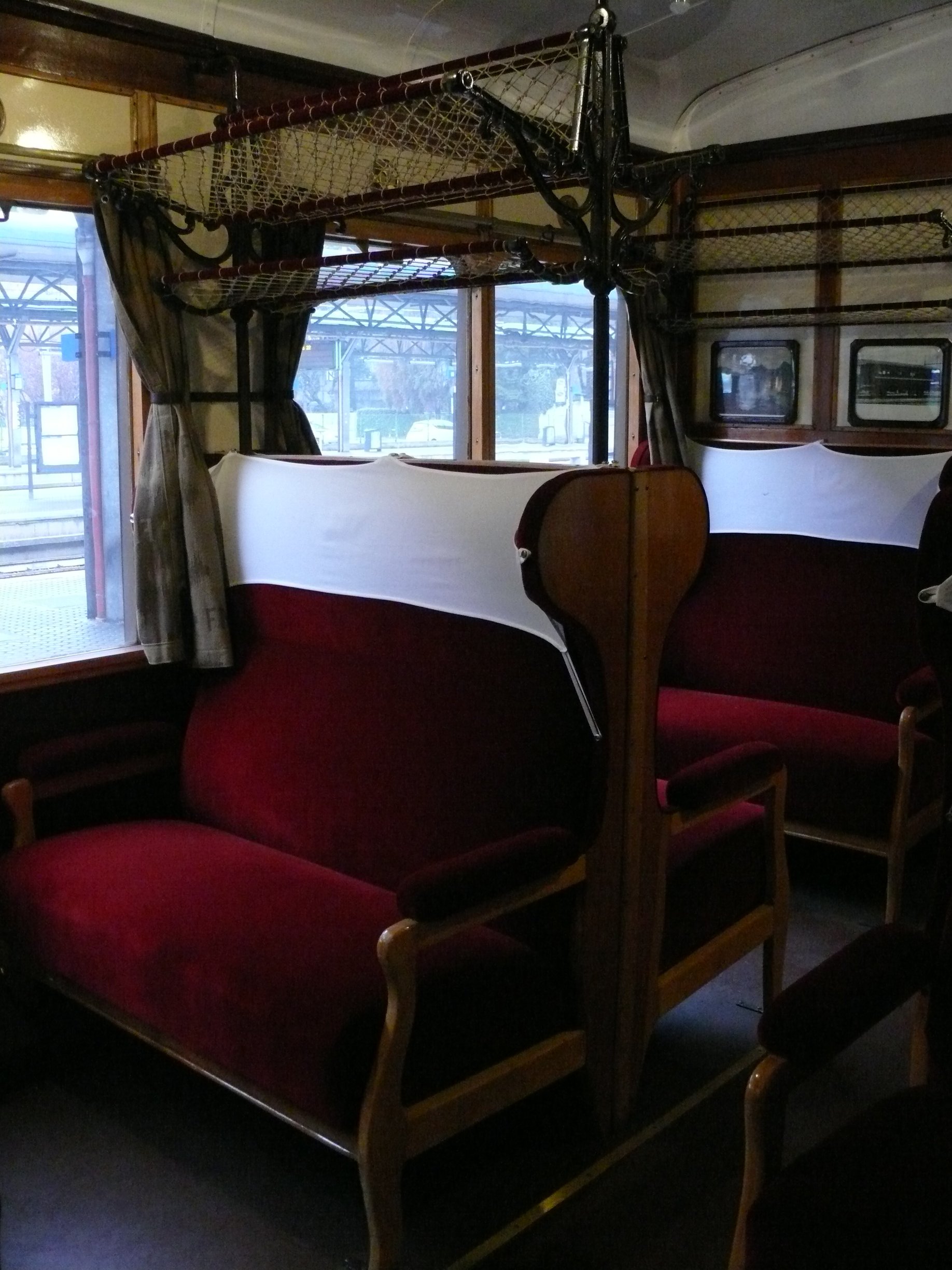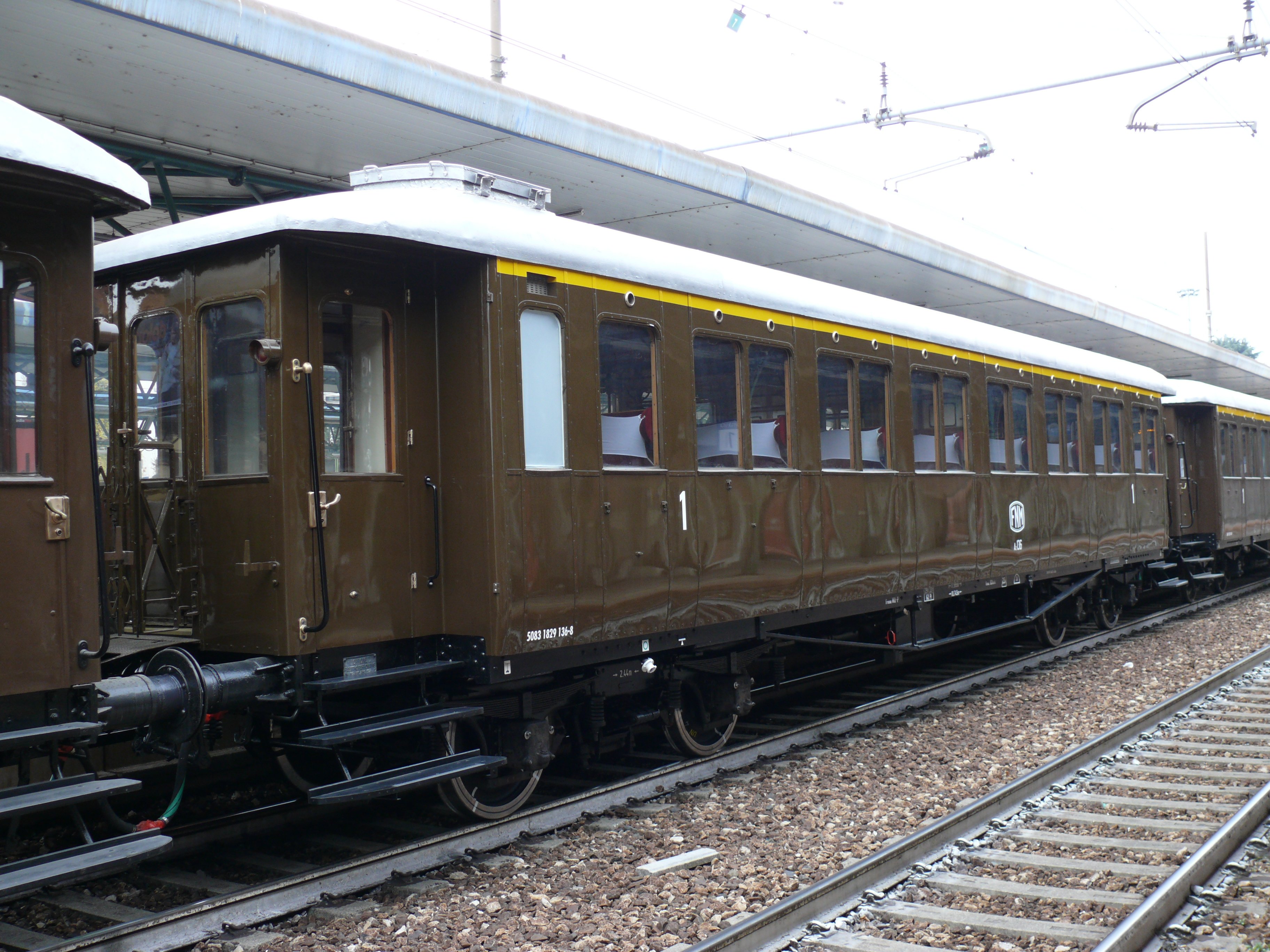Between 1923 and 1929, in order to improve the 1st class fleet (a much in-demand service at the time), FNM gradually put 52 coaches into operation. These were from a new class of the bogie type with a wooden body and were the first of this kind on the FNM network. They were built in 3 separate batches (series) by Breda, Officine Meccaniche and Officine Elettroferroviarie Tallero. The first 20 coaches in this class were delivered in 1923-24, numbered A 201 - 220 (later A 101-120); they featured access platforms and 2 axles. By 1930 the platforms were enclosed by vestibules with hinged doors. The second series of 1924-25 from A 121 to A 140 also had open platforms, which by 1930 were enclosed by vestibules with hinged doors. The third series, from A 151 to A 162, was delivered in 1929 with the platforms already enclosed and with hinged doors. They had large double windows. They were equipped with on-board toilets. They were mounted on Fox bogies (similar to the AA bogies of the FS) with 2-stage suspension with leaf and coil springs.
Az 101-162

- Progettazione: 1923
- Costruzione: 1924-29
- Esercizio: 1924-1984-presente
- Massa a vuoto: 29 t.
- Massa a pieno carico: 33 t.
- Costruttore: OEFT- BREDA-OM
- Lunghezza fuori tutto: 17.995 mm
- Interperno carrelli: 10.745 mm
- Ruote Ø: 980 mm
- Velocita massima: 80 Km/h
- Altezza imperiale: 3.770 mm
- Posti a sedere: 62 posti
- Freno: Continuo
- Illuminazione: elettrica
- Ritirata: 1
- Design date: 1923
- Build date: 1924-29
- Service date: 1924-1984-present
- Tare weight: 29 tons
- Gross weight: 33 tons
- Builder: OEFT- BREDA-OM
- Overall length: 17,995 mm
- Distance between bogie centres: 10,745 mm
- Wheel Ø: 980 mm
- Maximum speed: 80 Km/h
- Roof height: 3,770 mm
- Passenger capacity: 62 seats
- Braking system: Continuous
- Lighting: electric
- Toilet: 1
The interior was originally divided into two first-class sections, smoking and non-smoking. Both featured large seats upholstered in red velvet, seating a total of 62. Following modifications an end platform gave access to the toilet: an innovation for the time as no previous coach had been equipped with on-board toilet facilities. The white fabric headrests further distinguished the first class service. The FNM monogram was also engraved on the glass of the sliding doors between compartments. The furniture also included luggage nets on metal shelves.
Lighting was provided by battery-powered electric ceiling lights. Originally the heating system was with steam generated by the locomotive, or from a special baggage compartment in the train fitted with a boiler. Subsequently, every coach was equipped with an autonomous Webasto diesel-fired heater. Four of these coaches are still in existence and are currently being restored by Ferrovienord.
From the 1930s, the Az 131, 132 and 133 coaches used for the longer-distance trains were equipped with a small refreshments bar on one of the platforms, later removed after a few years.

